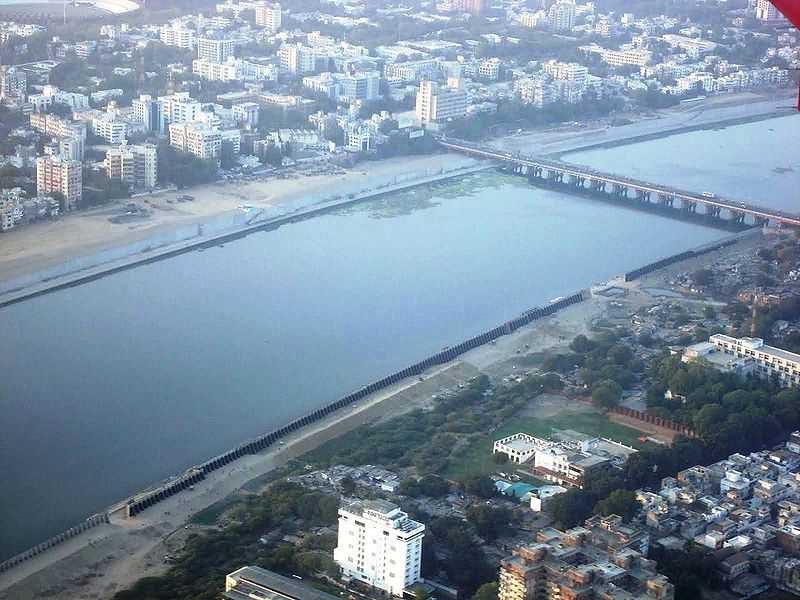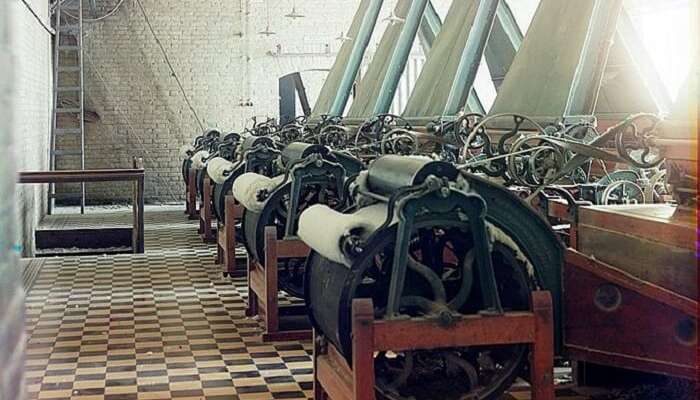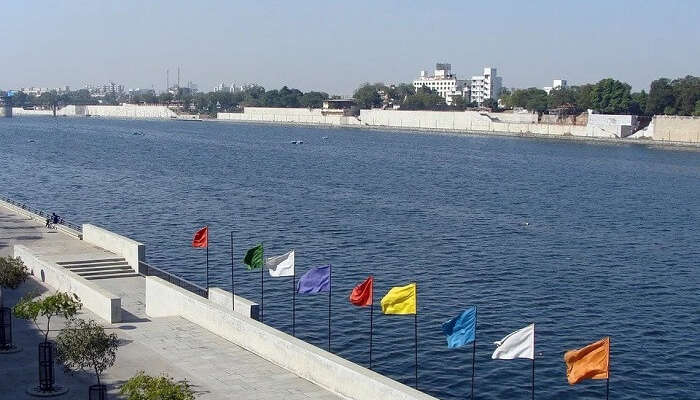
Manchester of India – This post discusses the reason as to why Ahmedabad is known as the Manchester of India. Ahmedabad, a city on the banks of River Sabarmati, is like no other. The seamless blend of ancient and modern, the drool-worthy delicacies, the stupendous structures, and the calmness exuding off the river combine to form the experience awaiting in this city.
1. Strategic Location
Ahmedabad is strategically located in a cotton-producing region. This means raw cotton is in abundance and is always available to the mills. In addition, there is easy availability of skilled as well as unskilled labours from nearby areas. Finally, there are rich businessmen in Gujrat, who offered them money for setting up the textile industry here. As Ahmedabad is well connected to the major cities of the country, it is easy to transport the finished goods to every other part of the globe. As a result, it developed as the major cotton-producing state in India as well as the world.

2. The First Mill Was Established in 1861
The first cotton textile mill, known as the Shahpur Mill came into existence in the year 1861. After its huge success, other businessmen felt inspired to invest in textile mills in Ahmedabad. By the end of the 20th century, there were thirty-three mills set up in the city. Soon after, the city of Ahmedabad was supplying cotton textiles to different parts of the country. For the very first time, two of the leading Indian industrialists, Ambalal Sarabhai and Kasturbhai Lalbhai called Ahmedabad the ‘Manchester of India’.

When you are in the textile capital of the nation, a visit to the Calico Textile Museum is a must. Calico Textile Museum displays textiles and clothes dating back to the 15th century and showcases the artistic skills of the Indian artists.
3. Culture

Out of the many things, culture is one thing that makes Ahmedabad the Manchester of India. The lively and vibrant locals are among the few reasons for many to fall in love with this city. Each festival is celebrated with the greatest enthusiasm, the streets are lit and well-ornamented, everyone is chirpy which showcases how the people here respect their culture and traditions with full heart. One can observe people in authentic, colorful attires bustling around the city which is as overwhelming as it sounds.
History of Ahmedabad
Chalukya Dynasty: Manchester Of India has a deeply-rooted and rich history to boast. Dating back to the 11th century, the area surrounding the present day city was called ‘Ashapalli’. That area including the region of Ahmedabad has witnessed several rulers come and go. One of the rulers was King Karna from the Chalukya dynasty. It was Karna who occupied and built the foundations of Karnavati on the banks of River Sabarmati. Later, it was the ‘Vaghela Dynasty’ that took over the land.
Mughal Dynasty: But it was in 1411 that the city ‘Karnavati’ was renamed to ‘Ahmedabad’ by Sultan Ahmed Shah. This city was once a capital of the entire eastern region of the River. Finally, in 1573, Mughal Dynasty reigned the country and Ahmedabad was occupied by Akbar who converted the city into a major region of commercial trades with textiles being the microfocus.
British Rule: Mughal Dynasty was followed by the Marathas and then eventually the British took over in 1818. Ahmedabad gained significance because of the railway that linked the city to Bombay and became an important textile centre of cotton. During the British rule, Ahemabad has witnessed various movements in light of the Indian Independence and as a result is home to two ashrams namely Sabarmati and Kochrab. Even after being subjected to reigns, independence fights, and communal riots, this city is still standing proud and is a major hub for many things including education, chemicals, and of course, textiles!
Top 3 Places To Visit In The Manchester Of India
1. Stepwells Adalaj
Constructed back in 1948, Stepwells Adalaj was once an important structure to curb the water crises in the nearby village. In the present day, this stepwell is an architectural marvel that provides access to groundwater. It is now the finest example of the excellent skills and illustrations by the engineers, workers, and architects from the golden era. The intricate carvings, tranquil environment, and the pleasant temperature combine to offer the experience of these stepwells.
Also Read : Tribes Nomads And Settled Communities
2. Sarkhej Roza
This is another one of the architectural marvels sitting on the floors of the Manchester of India. Sarkhej Roza is a tomb that also houses a mosque in its premises. Exhibiting the finest Islamic architecture from the centuries back, this tomb is situated in the Makbarara area of the city. One is bound to get transported to the area of Mughal period when visiting this attraction in Ahmedabad. It is also famed as the Acropolis of Ahmedabad after Le Corbusier compared the design of the marvel to that of the Acropolis of Athens.
3. Kankaria Lake
Kankaria Lake is famous for being the second largest one in the entire city and for offering something for everyone from parents to their little ones. Initially known as Hauz-e-Qutub, this lake was built back in the 15th century and has plenty of activities to offer. From balloon safari to toy trains, from amusement park to water sports, this lake ensures that you have the best of the time here. For those in search of solace can surely take a stroll around the stunning park located in the premises.
Comparison Between Manchester Of England And Manchester Of India

Now, what was it truly that made Ahmedabad earn the title of Manchester of India? The original city of Manchester is located in England and is majorly renowned for its cotton mills not only in the country, but across the globe, a trait that Ahmedabad picked up by the end of 20th century.
Second, while Ahmedabad is sitting next to the River Sabarmati that helps in drying out the cotton threads easily, Manchester is sitting on the banks of River Mersey which also helps the mills there in easy drying of threads.
The temperatures that both of these cities face are equally perfect for ideal spinning of the cotton threads. One advantage that Ahmedabad has is the climate there also helps in growing the cotton.
In the present day, it is Ahmedabad that ranks at the top as a manufacturer of cotton textiles. Home to the oldest of the mills in the entire country, this city earned the title of ‘Manchester of India’ because of the uncompromised quality of textiles they offer.
Conclusion – Manchester of India
Manchester of India – This city might be known for being among the prominent industrial areas of the country, but it is a lot more than that. It was also once a home to the noted freedom fighters namely Sardar Vallabh Bhai Patel and Mahatma Gandhi.